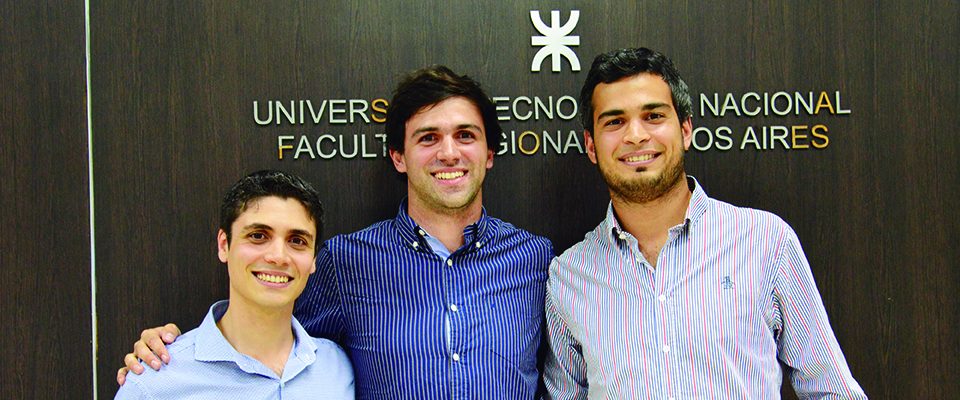Naval engineering students win an international award
They designed an ocean tug vessel for oil platforms, appropriate for the Argentine south sea.

Martín Jacoby, Nicolás Maslein, Ignacio Agustín Lozano and Federico Cascon, Naval Engineering students at UTN Buenos Aires, won the first place in the Ship Design Competition organized by the Society of Naval Architects and Marine Engineers (SNAME), the most important organization of naval and marine professionals in the world.
The students participated in the competition with an ocean tug vessel for oil platforms operating in the Argentine south sea. Its function is to carry supplies, fight fires, position them, provide assistance to them, handle anchors, and fight pollution, among others.
The competition
This was the first time that UTN Buenos Aires has participated in the competition, although the School has been partnered with SNAME for seven years through a student chapter, called Argentinian National Technological University (ANTU). UTNBA is the only representative in South America.
“At the end of the year, Silvina Logarzo, UTNBA’s representative for SNAME, suggested that we participate in this competition, -said Martín Jacoby-. With Nicolás Maslein, we were developing a Final Project for the undergraduate program that met the requirements.”
In this sense, Jacoby stated that “we agreed with the teachers that we would submit the project in English. By February we realized how much work it required. For this reason, we opened a call through the Naval Engineering Department to incorporate junior-year students.” That is when Ignacio Lozano and Federico Cascon joined the team.
“It was the first time we have participated in the project. It has been an amazing experience with a result that we did not expect, -Lozano stated-. The most difficult part was to find time to attend lessons, go to work and work on the project. Organization was crucial.”
In turn, Cascon added that “this kind of projects allows us to apply and integrate the contents studied in the courses, which are generally taught in isolation.”
“Federico and Ignacio made a very important contribution. We distributed the work and shared the problems encountered and that is how we made progress,” said Jacoby, also highlighting the support of the teachers and authorities of the Department, who collaborated so that they were able to submit their work in June. “The result surprised us. We knew we had developed something interesting, because many teachers who helped us after hours had told us it was a good project,” the student added.
The award-giving ceremony was held in October in Houston, USA, the headquarters of the SNAME MARITIME CONVENTION. The students were able to attend it and meet the rest of the contestants thanks to the School’s support. “Ten universities participated with 25 projects, -Jacoby stated-. They recognized us as pioneers, since there are other universities, such as those from Norway, which submit projects every year and do not always make it among the three top positions in the ranking.”
“We had the disadvantage of the language, because the project had to be presented in English, –Cascon added-. Besides, there’s also the fact that the four of us work and study, something that does not happen in the rest of the universities of the world and which requires a bigger effort in terms of finding time to devote to the project.”
In relation to this, the students affirmed: “as far as the academic level goes, and contrary to our preconceptions, we felt we were at the same level as the rest of the universities. We thought there would be some difference in that respect. But the actual difference is in the resources, be it computer software or the possibility of using a wave tank to run tests and a laboratory.”
There was a second group of students interested in participating in the initial call, who worked a large part of the year on a tug vessel in the port. Due to time constraints, however, they decided to participate next year. “What we did is not only for us; it should make a contribution for those to come, -Lozano stated-. We would like to let people know about the experience so that more projects are presented in the future and so that this kind of initiatives promote research activity among students.”



